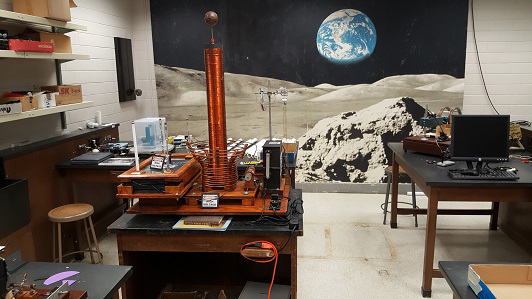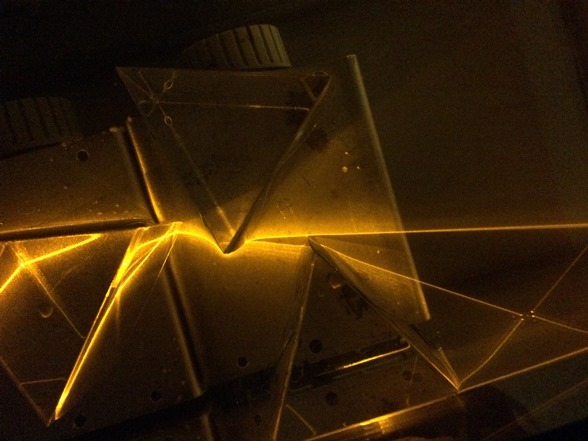Research
- Atomic and surface physics
- Theoretical atomic and molecular physics
- Electron diffraction by crystals
- Classical and quantum optics
- SPIN physics
- Fragmentation functions
- Volumetric three-dimensional imaging
- Radioactivity
X-ray fluorescence- Nuclear structures
- Astronomy
- Condensed matter physics
- Biophysics
- Particle physics
- Strongly correlated electron systems
- Novel Monte Carlo algorithms and many-body techniques
- Fluid dynamics and retention force
- Theoretical physics
- Quantum mechanical and Hilbert space concepts
- Resonance and Gamow States
- Retention force in fluid drops
Lamar CLAS
The Physics Department has joined the CLAS Experiment with the Thomas Jefferson National Accelerator Facility in Virginia. Jefferson Lab, known officially as the Thomas Jefferson National Accelerator Facility, is one of 17 US National Laboratories maintained by the US Department of Energy.
The CLAS Experiment is located in Experimental Hall B. CLAS is an acronym for CEBAF Large Acceptance Spectrometer. CEBAF is the acronym for Continuous Electron Beam Accelerator Facility known for a "world-class" facility devoted to the experimentation and study of hadronic matter. The facility is used by scientists around the world to probe deeply into the interior of the atomic nucleus for the purpose of studying its properties.

Experimental Hall B is the smallest of four experimental halls located at Jefferson Lab. Refer to the following resource to learn more about the purpose, scientific and technical details of CLAS.
Lamar BGO-OD
THE BGO-OD is a specialized designed 'Open - Dipole' Magnetic Spectrometer located at the DFG (German Research Group) at Bonn, Germany.
The Lamar University BGO-OD group is a collaboration of the physics department with BGO-OD experiment at the ELSA accelerator at the University of Bonn and is supported through the Deutsche Forschungsgemeinschaft (German Research Foundation). The Lamar group is the sole American collaborator of the multinational collaboration.

Refer to the following resource to learn about the research, scientific data and technical details of BGO-OD.
Advanced Physics Laboratory

This is for physics majors, or students majoring in physics-related studies, developing technical skills and techniques in the research and development of experimental apparatuses, tools and implementation of specialized technologies. Advancement in the skills of experimental physics is a requirement if you are engaging in a future career related to physics.
Optics and Photonics Laboratory
The Optics and Photonics Laboratory provides research opportunities and advanced course instruction at both graduate and undergraduate levels in the field of electromagnetics and photonics with modern optical equipment, including light detectors in IR, visible and UV ranges, light sources, such as lasers, discharge tubes and lamps. We offer tabletop setups for running experimental studies about the propagation of light through materials, fiber optics, imaging and the interaction between light and matter. Located in Archer Building Room 116.

The Main Areas of Study include:
- The interaction between Light and Dielectric Surfaces.
- Studies of Dispersive Curves for Optical Materials using the Brewster Angle and Minimum Deviation Methods.
- Atomic and Molecular Spectroscopy.
- Photo-emission and Photo-detection.
- Studies of the Pressure Broadening of Emission Lines.
- Photoelectric and Photovoltaic Effects.
- Imaging – Fourier Optics.
- Laser Physics.
- Physics of Noble Gases, Including Formation of Excimers